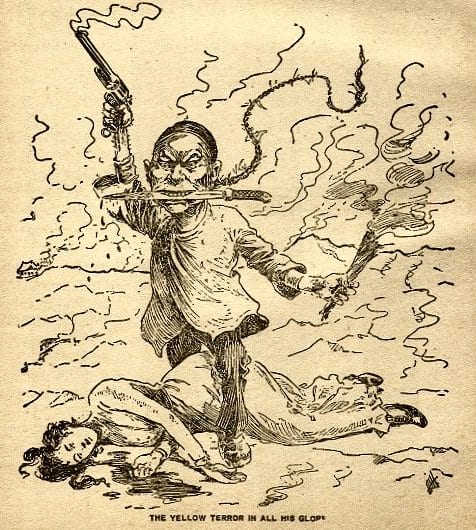
The China USA War: Unraveling the Trade War of the Century.
Oct 7, 2023
Introduction:
The global economic landscape has witnessed a monumental clash between two economic powerhouses, China and the United States. Dubbed as the “China-USA War,” this trade war has sent shockwaves across industries, economies, and markets worldwide. In this article, we delve into the intricacies of this historic conflict, examining its origins, implications, and potential resolutions. Join us as we navigate through the vast terrain of the China USA War, unraveling its complexities and shedding light on the questions that arise amidst this global economic battle.
Amidst this economic showdown, it is essential to recognize that the China-U.S. War did not materialize overnight. It has its roots in a complex web of trade imbalances, intellectual property disputes, and geopolitical tensions brewing for decades. As we explore this multifaceted conflict, we will also consider the broader implications for global trade, supply chains, and international relations.
Furthermore, we will analyze the strategies employed by both nations to gain the upper hand in this economic struggle. The tactics used in the China USA War have far-reaching consequences beyond their borders, from tariffs and trade restrictions to negotiations and policy shifts.
By comprehensively examining this ongoing battle, we aim to provide insights into the potential resolutions and pathways towards a more stable and cooperative global economic order. In doing so, we hope to contribute to a better understanding of the China-U.S. war and its profound impact on the world economy.
The China USA War: Origins of a Clash between Giants
The China USA War, a clash of economic giants, has captivated the world’s attention. To truly understand the origins of this epic confrontation, we must explore the latest and most interesting data that sheds light on the key factors driving this conflict.
China’s meteoric rise as an economic powerhouse has been astounding. Over the past few decades, it has transformed from an agrarian society into the world’s second-largest economy. With its vast population, cheap labour, and ambitious development plans, China has become a force to be reckoned with on the global stage.
Meanwhile, the United States, long accustomed to its status as the world’s leading economic power, has faced increasing competition from China. The fear of losing its economic dominance and concerns over job losses and intellectual property theft have fueled tensions between the two nations.
A significant contributing factor to the China-U.S. War is the trade imbalance between the two countries. China has emerged as the world’s largest exporter, flooding global markets with its goods. This has resulted in a massive trade deficit for the United States, igniting fears of economic dependency and unfair competition.
Moreover, intellectual property theft has become a focal point of contention. China’s alleged infringement upon the intellectual property rights of American companies has raised alarm bells in Washington. The theft of trade secrets, technology, and innovations has impacted the United States economically and threatened its national security.
The latest data highlights the scale of the issue. Reports suggest that intellectual property theft costs the United States hundreds of billions of dollars annually, affecting industries ranging from technology and pharmaceuticals to manufacturing and agriculture. This staggering figure underscores the urgency of addressing and protecting American innovation.
As tensions escalate, both China and the United States have adopted aggressive trade policies and retaliatory measures. Tariffs, sanctions, and export controls have become weapons in this economic war. The latest data reveals the far-reaching impact of these measures, with disruptions in global supply chains, job losses, and shifts in trade patterns.
The China USA War is not just confined to economic realms but also extends to technological dominance. The race for supremacy in emerging technologies, such as artificial intelligence, quantum computing, and 5G networks, has intensified. The latest data showcases the enormous investments made by both countries in these fields, underscoring the high stakes involved.
As the conflict unfolds, the world watches with bated breath, aware of the ripple effects that the China-U.S. War will have on the global economy, geopolitics, and the balance of power. The latest data serves as a compass, guiding us through the complexities of this epic clash and providing insights into the evolving dynamics between these two giants. Stay tuned as we continue to unravel the drama, intrigue, and consequences of this historic confrontation.
China-USA Trade War: Unraveling the Numbers Behind Trade Imbalance
Trade imbalances between China and the United States have become a central point of contention, shaping the landscape of the China-U.S. War. To understand the significance of these imbalances and their impact on both economies, let’s delve into the intricate web of imports and exports that have fueled tensions between the two nations.
China holds a prominent position as the world’s largest exporter, while the United States is one of the largest importers. This disparity has resulted in a substantial trade deficit for the United States, with China consistently exporting far more goods to the United States than it imports. In 2020, the U.S. trade deficit with China reached a staggering $310 billion.
The trade imbalances have far-reaching consequences for both economies. For the United States, the persistent trade deficit raises concerns about economic dependency and job losses. Critics argue that the flood of cheap Chinese goods into the American market has contributed to the decline of certain industries and the loss of manufacturing jobs.
On the other hand, China’s export-driven economy heavily relies on maintaining a robust trade surplus. The surplus has fueled China’s rapid economic growth and facilitated investments in infrastructure, technology, and domestic development. However, it has also drawn criticism from the United States and other countries, who argue that China gains an unfair advantage by manipulating its currency, subsidizing industries, and engaging in intellectual property theft.
The trade imbalances have created a complex web of economic dependencies and tensions. The United States seeks to address the deficits and protect its domestic industries, while China aims to maintain its export-driven growth model and expand its global economic influence.
To tackle these imbalances, both countries have employed various strategies. The United States has imposed tariffs on Chinese goods, aiming to reduce the deficit and protect domestic industries. In response, China has retaliated with taxes of its own, targeting American products such as agricultural goods and automobiles. These tit-for-tat measures have further escalated the trade tensions and contributed to an atmosphere of economic warfare.
The trade imbalances between China and the United States have reverberated through various sectors, affecting industries such as manufacturing, technology, agriculture, and consumer goods. The disruption in global supply chains, the shifting dynamics of international trade, and the uncertainty surrounding future trade policies have created challenges for businesses and investors in both nations.
As the China-U.S. war unfolds, addressing the trade imbalances remains a crucial point of contention. The impacts are not only economic but also have political and social ramifications. Resolving these imbalances requires intricate negotiations, compromises, and potentially reevaluating the global trade framework.
Understanding the intricacies of trade imbalances is essential to grasp the underlying causes of the China USA War. By exploring the web of imports and exports, we gain insights into the tensions, motivations, and consequences that shape this economic clash between two giants.
B. Intellectual Property Theft: A Battle for Innovation
Intellectual property theft has emerged as a critical battleground in the China USA War, with profound implications for the United States’ innovation ecosystem. The alleged infringement on intellectual property rights by China has had far-reaching effects on the American economy, prompting a series of measures to address this issue and safeguard future innovation.
China’s alleged intellectual property theft encompasses a range of illicit activities, including the theft of trade secrets, counterfeiting, patent infringement, and forced technology transfers. These actions have significantly impacted U.S. industries across sectors such as technology, manufacturing, pharmaceuticals, and more.
The United States has borne the brunt of these infringements, with estimates suggesting that intellectual property theft costs the U.S. economy hundreds of billions annually. The theft of trade secrets and proprietary technologies erodes the competitive advantage of American companies, undermines their market position, and stifles their ability to innovate.
Furthermore, the alleged theft of intellectual property has national security implications. The United States recognizes that its technological leadership is crucial for maintaining its military edge and protecting sensitive information. Thus, the theft of advanced technologies can compromise national security interests and erode America’s technological superiority.
To address this issue, the United States has implemented various measures to combat intellectual property theft and protect its innovation base. These include increased enforcement efforts, stricter regulations, and targeted sanctions on individuals and entities involved in intellectual property violations. The U.S. government has also engaged in diplomatic negotiations and trade talks with China to address intellectual property concerns.
Additionally, the United States has sought to strengthen intellectual property protection through legal frameworks and international agreements. It has collaborated with like-minded countries to establish robust mechanisms for enforcing intellectual property rights and combating illicit activities.
The implications of intellectual property theft extend beyond the immediate economic and security concerns. They have broader implications for future innovation and global technological advancement. The fear of intellectual property theft has prompted increased caution among U.S. companies, affecting their willingness to share knowledge and collaborate with counterparts in China. This could potentially hinder the free flow of ideas and impede global innovation networks.
Moreover, the China-U.S. War has spurred both countries to invest heavily in research and development, particularly in emerging technologies such as artificial intelligence, quantum computing, and 5G networks. The race for technological dominance has intensified, driven by the desire to protect intellectual property and gain a competitive edge. This race has profound implications for the future of innovation, as breakthroughs in these fields can shape economic growth, national security, and societal transformation.
As the battle for innovation continues, addressing intellectual property theft remains a crucial objective for the United States. It requires a multi-faceted approach that combines legal, diplomatic, and technological measures. By safeguarding intellectual property rights, fostering innovation-friendly environments, and promoting international cooperation, the United States aims to protect its innovation ecosystem and ensure its continued leadership in the global technological landscape.
II. Escalation and Retaliation: Unveiling the Battle Tactics
The China USA War has witnessed the employment of various strategies and tactics by both China and the United States as they seek to gain advantages in the trade war. These strategies include the use of tariffs, sanctions, and other retaliatory measures. The impact of these tactics on industries and economies globally has been significant.
1. Tariffs: Tariffs have been a prominent tool used by both China and the United States in the trade war. The United States initiated the imposition of tariffs on Chinese goods under Section 301 of the Trade Act of 1974, citing unfair trade practices and intellectual property theft. China retaliated with its own tariffs on American goods, mainly targeting agriculture, automobile, and manufacturing industries. These tit-for-tat tariffs have disrupted global supply chains, increased business costs, and affected consumer prices.
The tariffs have had specific effects on industries. For instance, American farmers exporting agricultural products to China faced reduced demand due to retaliatory tariffs, causing financial difficulties for many farmers. Similarly, U.S. manufacturers relying on Chinese imports for raw materials or components have experienced increased production costs, impacting their competitiveness.
2. Sanctions: Sanctions have been imposed by the United States on certain Chinese entities, particularly those involved in intellectual property theft and other illicit activities. These sanctions can restrict access to U.S. technologies, limit business opportunities, and damage targeted entities’ reputations. Chinese entities have also been subject to other forms of sanctions, such as visa restrictions and asset freezes. These measures aim to deter intellectual property theft and influence the behaviour of targeted entities.
3. Non-Tariff Measures: In addition to tariffs and sanctions, both sides have employed non-tariff measures. These include regulatory actions, export controls, and restrictions on foreign investments. For example, the United States has implemented measures to restrict Chinese access to sensitive technologies and protect national security interests. These non-tariff measures can disrupt business operations, hinder cross-border investments, and create regulatory uncertainties.
The impact of these tactics extends beyond China and the United States, affecting economies globally. The trade war has disrupted global supply chains as businesses seek to diversify their sourcing and production away from China. Companies have faced increased costs due to tariffs and trade barriers, leading to potential consumer price increases.
Some industries have been particularly affected. For example, the automobile industry, which relies on complex global supply chains, has faced challenges due to trade tensions and increased costs. Technology companies have experienced disruptions in the worldwide flow of components and face increased scrutiny over intellectual property concerns.
The trade war has also created uncertainties in global financial markets as investors navigate shifting trade policies and geopolitical tensions. The volatility and unpredictability associated with the trade war have influenced investment decisions and affected business confidence worldwide.
Moreover, the trade war has prompted countries to reassess their trade relationships and policies. Some nations have implemented protective measures to safeguard their domestic industries, while others have pursued new trade agreements and partnerships to diversify their markets.
In summary, the strategies employed by China and the United States in the trade war include tariffs, sanctions, and non-tariff measures. These tactics have significantly impacted industries and economies globally, disrupting supply chains, increasing costs, and affecting business confidence. The trade war has prompted a global reevaluation of trade relationships and policies, as countries navigate the uncertainties and seek to mitigate the adverse effects of the ongoing conflict.
China USA War: Tariffs as the Weapon of Choice
Tariffs have been a prominent tool in the China-U.S. War, significantly impacting trade flows, economic growth, and ripple effects across industries and regions. Let’s explore the short-term and long-term implications of tariffs in more detail:
1. Trade Flows: Tariffs disrupt trade flows by increasing the costs of imported goods. When a country imposes tariffs on specific products, those goods are more expensive for domestic consumers and businesses, reducing demand. As a result, imports of those goods tend to decrease. Conversely, the country imposing the tariffs may see an increase in domestic production of those goods as businesses seek to avoid the added costs of imported alternatives.
2. Economic Growth: The impact of tariffs on economic growth is more complex. In the short term, tariffs can lead to a decline in economic activity due to reduced trade and disruptions to supply chains. Businesses face higher costs, leading to lower profitability, reduced investment, and potential job losses. Uncertainty surrounding trade policies can also dampen business and consumer confidence.
However, in the long term, the implications of tariffs on economic growth are less clear-cut. Some argue that tariffs provide protection for domestic industries, allowing them to compete and grow. This can lead to increased domestic production and job creation in certain sectors. On the other hand, tariffs can also hinder economic efficiency by reducing access to cheaper imported goods and disrupting global value chains, potentially stifling innovation and productivity growth.
3. Ripple Effects Across Industries: Tariffs have ripple effects that permeate various industries. When tariffs are imposed on intermediate goods or raw materials, industries relying on those inputs face increased production costs. For example, tariffs on steel and aluminium can raise costs for industries such as automotive and construction, impacting their competitiveness and potentially leading to job losses.
Furthermore, retaliatory tariffs can trigger a chain reaction of counter-tariffs, escalating the trade conflict. This can create a domino effect across industries as different sectors embroiled in the trade dispute. For instance, U.S. agricultural producers faced retaliatory tariffs from China, reducing exports and financial hardships for farmers.
4. Regional Implications: Tariffs can have varying regional implications depending on a region’s specific industries and trade relationships. Countries heavily dependent on exports of goods targeted by tariffs may experience a direct negative impact on their economies. For instance, East Asian economies, which are deeply integrated into global supply chains and rely heavily on trade with China and the United States, have felt the effects of the trade war.
Moreover, countries that act as intermediaries in global trade, such as those involved in transhipment or processing trade, may also be affected. These countries rely on the smooth flow of goods between China and the United States, and disruptions caused by tariffs can have adverse consequences for their economies.
Industries Profoundly Affected by Tariffs: Real-Life Examples
Several industries have been heavily impacted by tariffs imposed during the China USA War. Here are some examples:
1. Agriculture: The agricultural sector has faced significant challenges due to retaliatory tariffs. For instance, China imposed tariffs on a range of American farm products, including soybeans, pork, and dairy products. As a result, U.S. farmers experienced reduced product demand, leading to lower prices and financial difficulties. The tariffs disrupted established agricultural trade relationships and caused farmers to seek alternative markets or rely on government support.
2. Automotive: Tariffs on raw materials and finished vehicles have affected the automotive industry. Tariffs on steel and aluminium increased production costs for automakers, as these materials are essential for vehicle manufacturing. Higher costs can reduce profitability, impact investment decisions, and potentially lead to job losses. Additionally, retaliatory tariffs on American vehicles by China and other countries have reduced demand for U.S. automotive exports, further impacting the industry.
3. Manufacturing: Tariffs on intermediate goods and components used in manufacturing have disrupted supply chains and increased costs for manufacturers. Industries relying on imported inputs, such as electronics, machinery, and consumer goods, have faced challenges. Manufacturers have sought alternatives, such as sourcing from different countries or domestic production, but these adjustments can be costly and time-consuming. The uncertainty surrounding trade policies has also affected investment decisions and business planning in the manufacturing sector.
4. Technology and Electronics: The technology and electronics industries have been significantly impacted by tariffs, particularly those targeting Chinese goods. These industries rely heavily on global supply chains, with components and products crossing borders multiple times during manufacturing. Tariffs on technology and electronics goods have disrupted these supply chains, increased costs, and affected the competitiveness of companies in these sectors.
5. Retail and Consumer Goods: Tariffs on consumer goods, such as clothing, footwear, and electronics, have impacted the retail industry. Increased costs due to tariffs can be passed on to consumers through higher prices, affecting consumer purchasing power and demand. Retailers have had to navigate these challenges by diversifying sourcing strategies, negotiating with suppliers, and absorbing some of the cost increases to remain competitive.
It’s important to note that the impact of tariffs on industries can vary depending on the specific products targeted, the level of integration into global supply chains, and the ability of businesses to adapt. Additionally, the effects of tariffs can extend beyond individual industries, as disruptions in one sector can have spillover effects on related industries and the overall economy.
The examples provided highlight industries that have experienced significant challenges due to tariffs, but it’s worth mentioning that the full extent of the impact may continue to evolve as trade dynamics change and countries adjust their strategies in response to the trade war.
B. Technological Cold War: The Battle for Dominance
Advancements in artificial intelligence (AI), 5G technology, and cybersecurity play a crucial role in the technological competition between China and the United States. This battle for supremacy has significant implications for national security, economic dominance, and global alliances. Let’s explore these aspects in more detail:
1. Artificial Intelligence (AI): AI is a key driver of economic growth and innovation. Both China and the United States recognize the strategic importance of AI and are investing heavily in its development. AI has applications across various sectors, including healthcare, transportation, finance, and defence. A country with a technological advantage in AI can shape industries, improve productivity, and gain economic dominance.
In the China USA War, AI is important for economic competition and military capabilities. AI can potentially enhance military operations, autonomous weapons systems, and cyber warfare. The race for AI dominance has implications for national security, as the country with superior AI capabilities can gain an edge in intelligence gathering, surveillance, and command and control systems.
2. 5G Technology: 5G technology represents the next generation of wireless networks, offering higher speeds, lower latency, and increased connectivity. It has transformative potential, enabling advancements in areas like autonomous vehicles, the Internet of Things (IoT), and smart cities. China and the United States are competing to lead the global rollout of 5G technology.
The deployment of 5G has implications for national security, as it involves critical infrastructure vulnerable to cyber threats and surveillance. Concerns have been raised regarding potential espionage risks and foreign entities’ control of 5G networks. The technological leadership in 5G can influence the ability to set standards, shape the digital economy, and gain an economic advantage in emerging sectors.
3. Cybersecurity: The digital landscape has become a battleground for cyber warfare, with China and the United States investing in cybersecurity capabilities. Cyberattacks can target critical infrastructure, government institutions, businesses, and individuals. Protecting sensitive information, intellectual property, and critical systems is crucial for national security and economic competitiveness.
The conflict between China and the United States involves cybersecurity concerns such as state-sponsored hacking, intellectual property theft, and espionage. Both countries are working to develop robust cybersecurity defences, enhance surveillance capabilities, and establish regulations to protect their interests.
4. Implications for National Security, Economic Dominance, and Global Alliances: The competition for technological supremacy in AI, 5G, and cybersecurity has significant implications.
a. National Security: Technological advancements have direct implications for national security. The country that leads in critical technologies can gain an advantage in intelligence gathering, military capabilities, and defence systems. Protecting critical infrastructure and sensitive data becomes crucial to safeguard national security interests.
b. Economic Dominance: Technological leadership is closely tied to economic dominance. The country that dominates critical technologies can shape industries, gain market share, and attract investments. It can also influence global standards, intellectual property rights, and the future of emerging sectors. Economic competitiveness relies on the ability to innovate and leverage technological advancements.
c. Global Alliances: The technological competition between China and the United States has implications for global alliances and partnerships. Countries may align themselves with one side or the other based on shared technical interests, economic ties, or security concerns. This can lead to forming new alliances or reevaluating existing ones, potentially reshaping geopolitical dynamics.
III. Global Implications: The Ripple Effect
The global implications of the China USA War, particularly the trade war, are significant and extend beyond the borders of the two nations involved. Here are some of the vital global implications:
1. Global Economy: The trade war has introduced uncertainties and disruptions to the global economy. Trade tensions between China and the United States have led to higher tariffs, reduced trade flows, and increased business costs. This has dampened global trade growth and has the potential to slow down global economic growth. The volatility and unpredictability resulting from the trade war have also affected business and consumer confidence, impacting investment decisions and consumption patterns worldwide.
2. Supply Chains and Global Value Chains: The trade war has disrupted supply and value chains. Many industries rely on complex networks of suppliers and production processes that span multiple countries. The imposition of tariffs and trade barriers has forced businesses to rethink and restructure their supply chains to mitigate the impact of the trade war. This has involved diversifying sourcing strategies, relocating production facilities, or seeking alternative markets. These adjustments have ripple effects across industries and regions, impacting the flow of goods, investments, and employment opportunities.
3. Global Trade Relations and Rules-Based System: The trade war has strained global trade relations and challenged the rules-based trading system. The use of unilateral tariffs and trade restrictions undermines the principles of free trade. It disrupts the established framework of international trade governed by organizations such as the World Trade Organization (WTO). The erosion of trust and escalating trade tensions between major economies can lead to a more fragmented and protectionist global trade environment, potentially hindering global economic cooperation and multilateral negotiations.
4. Global Investment and Capital Flows: The trade war has affected global investment and capital flows. The uncertainty surrounding trade policies and the potential for escalating tensions have led to cautious investment decisions and a decline in cross-border investments. Businesses may delay or scale back investment plans due to the risks associated with the trade war. Moreover, the redirection of trade and investment flows as a result of the trade war can have implications for countries and regions that were not directly involved in the conflict.
5. Geopolitical Shifts and Alliances: The China USA War has geopolitical implications as countries reassess their relationships and alliances based on their economic and security interests. Some countries may align themselves more closely with China or the United States, while others seek to diversify their partnerships to reduce dependency on either country. This can lead to shifts in geopolitical dynamics, regional alliances, and influence over global governance structures.
6. Emerging Economies and Developing Countries: The trade war has had varying impacts on emerging and developing economies. Some countries have faced direct consequences due to their trade relationships with China or the United States. For example, countries heavily reliant on commodity exports or manufacturing sectors integrated into global supply chains have experienced disruptions and economic challenges. Moreover, the trade war can exacerbate existing global economic disparities and affect the ability of developing countries to participate in international trade.
A. Supply Chain Disruptions: A Global Quandary
Disruptions in the global supply chain resulting from the China-U.S. war and other factors have significantly impacted industries worldwide. These disruptions have led to various challenges and complexities in supply networks while also revealing vulnerabilities and potential opportunities. Let’s delve into these aspects:
Impacts on Industries:
a. Production Delays and Shortages: Supply chain disruptions have led to production delays and shortages of components, raw materials, and finished goods. Industries heavily reliant on global supply chains, such as automotive, electronics, and consumer goods, have experienced challenges in maintaining stable production levels. This has reduced output, increased costs, and potential revenue losses.
b. Increased Costs: Supply chain disruptions have caused cost increases for businesses. Factors such as tariffs, higher transportation costs, and the need for alternative sourcing have raised production and operational expenses. These increased costs can impact profit margins, pricing strategies, and competitiveness, particularly for small and medium-sized enterprises (SMEs) with limited resources.
c. Inventory Management: Supply chain disruptions have highlighted the importance of effective inventory management. Industries that relied on just-in-time inventory systems faced difficulties in managing stock levels, as disruptions disrupted the flow of goods. Excess inventory or shortages can lead to inefficiencies, increased carrying costs, and potential revenue losses.
d. Shifts in Consumer Demand: Changes in supply chains have affected consumer demand patterns. Disruptions and shortages have influenced consumer choices and preferences, leading to shifts in demand for certain products or brands. Industries must adapt to these changes, potentially requiring adjustments to product offerings, marketing strategies, and distribution channels.
Challenges from Supply Network Reconfiguration:
a. Supplier Identification and Qualification: Disruptions necessitate the identification and qualification of alternative suppliers. This process can be time-consuming and challenging, requiring businesses to evaluate supplier capabilities, quality standards, and reliability. Ensuring alignment with new suppliers and maintaining consistent quality standards can pose significant challenges.
b. Increased Complexity and Risks: Reconfiguring supply networks increases complexity and risks. Establishing new supplier relationships, managing multiple suppliers, and navigating different regulatory frameworks can be daunting. Supply chains may become more geographically dispersed, increasing the risk of geopolitical uncertainties, trade barriers, and logistics challenges.
c. Cost Considerations: The reconfiguration of supply networks can involve additional costs. Negotiating contracts, redesigning logistics and transportation routes, and implementing new systems and processes require financial investments. Balancing cost considerations with the need for supply chain resilience and risk mitigation is crucial but can be challenging.
d. Adaptation Time and Learning Curve: Adjusting to new supply networks takes time and may involve a learning curve. Businesses must adapt to new processes, build relationships with new suppliers, and potentially train employees on new systems. This transition period can impact operational efficiency and productivity, requiring careful planning and resource allocation.
3. Vulnerabilities and Potential Opportunities:
a. Overreliance on Single Sources: Supply chain disruptions have exposed the vulnerabilities of relying heavily on single sources or a limited number of suppliers. Businesses are now more aware of the risks associated with concentration in specific regions or suppliers. Diversifying supply networks and sourcing strategies can enhance resilience and mitigate future disruptions.
b. Localization and Regionalization: Supply chain disruptions have prompted discussions around localization and regionalization of supply networks. Businesses are exploring the potential benefits of nearshoring or reshoring certain production activities to reduce dependence on distant suppliers. This shift can create opportunities for local industries and contribute to regional economic development.
c. Technological Innovation: Disruptions have accelerated the adoption of technologies to enhance supply chain resilience. Technologies such as artificial intelligence, blockchain, and advanced analytics can improve supply network visibility, traceability, and risk management. Embracing digitalization and innovation can create opportunities for businesses to build more robust and agile supply chains.
d. Collaboration and Partnerships: Industries have recognized the importance of collaboration and partnerships to address supply chain challenges collectively. Building strategic alliances with suppliers, sharing information, and collaborating on risk management can enhance supply chain resilience. Such collaborations can foster trust, promote knowledge sharing, and enable joint problem-solving.
B. Emerging Markets: Caught in Crossfires
The China USA War, particularly the trade war, has had significant implications for emerging markets. These markets have been caught in the crossfires and have experienced both positive and negative effects on their economic growth, investment climate, and geopolitical positioning. Let’s explore these aspects and analyze the winners and losers in this global economic power struggle:
1. Economic Growth:
a. Winners:
– Alternative Suppliers: Emerging markets that have positioned themselves as alternative suppliers to China or the United States have benefited from the trade war. As businesses seek to diversify their supply chains and reduce reliance on the warring nations, these emerging markets have witnessed increased export opportunities and foreign direct investment (FDI).
– Import Substitution: Some emerging markets have leveraged the trade war as an opportunity to promote import substitution industries. By producing goods and services domestically that were previously imported from China or the United States, these markets have aimed to reduce dependence and stimulate domestic economic growth.
b. Losers:
– Export-Oriented Industries: Emerging markets heavily reliant on exports to China or the United States have suffered from reduced demand and disrupted supply chains. Higher tariffs and trade barriers have impacted their competitiveness, decreasing export volumes and revenue losses.
– Commodity Exporters: Emerging markets that heavily rely on commodity exports, such as oil, metals, or agricultural products, have experienced price volatility due to the trade war. Fluctuations in demand and disruptions to global supply chains have affected commodity prices, impacting the economic growth of these markets.
2. Investment Climate:
a. Winners:
– FDI Diversion: Emerging markets have attracted foreign direct investment (FDI) redirected from China or the United States due to the trade war. Businesses seeking to mitigate risks associated with the conflict have explored investment opportunities in these markets. This influx of FDI can contribute to economic growth, job creation, and technology transfer in the recipient countries.
– Infrastructure Development: Infrastructure projects in emerging markets, such as ports, railways, and telecommunications, have garnered attention from investors looking for alternative markets amidst the trade war. These investments can enhance connectivity, improve trade facilitation, and support long-term economic development.
b. Losers:
– Investment Uncertainty: The trade war and its associated uncertainties have dampened investor confidence, leading to a cautious investment climate. Emerging markets perceived as having high exposure to trade tensions or geopolitical risks may face challenges in attracting and retaining investment. Uncertainties around trade policies and future market access can hinder investment decision-making.
3. Geopolitical Positioning:
a. Winners:
– Regional Influence: Some emerging markets have used the trade war to strengthen their regional influence. By fostering closer economic ties and partnerships with neighbouring countries, these markets aim to enhance their geopolitical positioning and diversify their alliances.
– Global Governance Reforms: The trade war has prompted discussions around global governance reforms, including the World Trade Organization (WTO). Emerging markets have sought to leverage this momentum to advocate for a more inclusive and equitable global trade system, which can enhance their representation and influence on the world stage.
b. Losers:
– Geopolitical Dependencies: Emerging markets heavily dependent on China or the United States for trade, investment, or security partnerships may face challenges in navigating the evolving geopolitical landscape. Their dependence on a single power may limit their flexibility and bargaining power in international affairs.
It is important to note that the winners and losers in the global economic power struggle resulting from the China-U.S. War can vary depending on each emerging market’s specific circumstances and characteristics. The implications for economic growth, investment climate, and geopolitical positioning are multidimensional and multifaceted.
IV. Seeking Resolutions: Charting a Path Forward
Resolving the China-U.S. war and finding a path forward is crucial for both nations and the global economy. While the situation is complex, there are potential ways to alleviate tensions and reach some resolution. Here are a few possibilities and possible outcomes:
1. Negotiations and Diplomacy: A diplomatic approach involving negotiations and dialogue can help de-escalate tensions and find common ground. China and the United States could engage in constructive discussions to address their trade disputes, intellectual property concerns, and other contentious issues. This could lead to the establishing new trade agreements and frameworks that promote fair and balanced economic relations.
2. Multilateral Cooperation: Engaging in multilateral forums such as the World Trade Organization (WTO) can provide a platform for addressing trade disputes and establishing global rules and norms. By working within existing international frameworks, China and the United States can seek resolution through a rules-based approach that promotes fairness and transparency.
3. Economic Reforms: China and the United States can undertake domestic economic reforms addressing the underlying issues driving the trade war. This could involve structural changes to address concerns related to intellectual property rights, market access, and state subsidies. Implementing reforms that promote a level playing field can help restore confidence and create a more stable economic environment.
4. Bilateral Agreements: China and the United States could pursue bilateral agreements to address specific issues of concern. These agreements could focus on intellectual property protection, market access, and technology transfer. By resolving specific disputes through targeted negotiations, both nations can progress in reducing tensions and creating a more stable economic relationship.
Potential outcomes of resolving the China USA War include:
a. Reduced Trade Barriers: A resolution could reduce tariffs, trade barriers, and other restrictive measures. This would facilitate increased trade flows, benefiting businesses and consumers in both nations and promoting global economic growth.
b. Enhanced Economic Cooperation: Resolving the conflict could foster enhanced economic cooperation between China and the United States. This could involve increased investments, joint ventures, and technology collaborations, leading to mutually beneficial outcomes.
c. Restored Global Confidence: A resolution would restore global confidence in the stability of the worldwide economy. It would reduce uncertainty and create a more predictable environment for businesses, investors, and financial markets.
d. Improved Geopolitical Relations: Resolving the trade war could have positive geopolitical implications, potentially improving overall relations between China and the United States. This could increase cooperation on other global challenges, such as climate change, security issues, and regional stability.
While finding a resolution to the China-U.S. war is challenging, it is essential for the well-being of both nations and the global economy. By pursuing negotiations, multilateral cooperation, economic reforms, and targeted bilateral agreements, there is a possibility of reaching a resolution that promotes stability, ]
A. Diplomatic Channels: Negotiations and Dialogue
Diplomatic efforts have been made to resolve the China USA War, although the process has been complex and challenging. Here are some key diplomatic channels and initiatives that have been undertaken:
1. Bilateral Trade Talks: China and the United States have engaged in several trade talks to address their economic disputes. These negotiations have included high-level meetings between officials from both countries, such as the U.S.-China Strategic and Economic Dialogue and the U.S.-China Comprehensive Economic Dialogue. However, progress has been mixed, with periods of constructive dialogue followed by setbacks.
2. Phase One Trade Agreement: In January 2020, the United States and China signed a Phase One trade agreement. This agreement aimed to address issues related to intellectual property, forced technology transfer, agriculture, and financial services. While it provided some temporary relief and a partial de-escalation of tensions, challenges remain in fully implementing and enforcing the agreement.
3. Multilateral Forums: China and the United States have also engaged in discussions within multilateral forums, such as the World Trade Organization (WTO). Both nations have raised their concerns and grievances regarding trade practices and policies, seeking support from other member countries to address their respective issues.
Several factors influence prospects for fruitful negotiations and diplomatic resolutions:
1. Trust and Communication: Rebuilding trust and establishing effective communication channels between China and the United States is crucial. Mutual understanding and respect for each other’s concerns and interests can create a more conducive environment for successful negotiations.
2. Complexity of Issues: The China USA War involves many complex issues, including trade imbalances, intellectual property rights, market access, and technology competition. Resolving these multifaceted issues requires comprehensive and nuanced negotiations, which can be challenging.
3. Geopolitical Considerations: The trade war is intertwined with broader geopolitical considerations, such as national security and strategic competition between China and the United States. These factors can further complicate negotiations and decision-making processes.
4. Domestic Political Factors: Domestic political considerations in both countries can impact the negotiation prospects. Public opinion, election cycles, and political dynamics influence the stance and approach of policymakers, potentially affecting the willingness to compromise and make concessions.
Diplomatic resolutions and successful negotiations would have significant implications for global economic stability:
1. Reduced Uncertainty: A successful resolution to the China USA War would reduce uncertainty and provide greater predictability for businesses, investors, and financial markets. This stability can support global economic growth and investment.
2. Trade Facilitation: Resolving the conflict would reduce trade barriers and promote greater market access. This would facilitate increased trade flows, benefiting businesses, consumers, and economies worldwide.
3. Confidence and Investment: Successful negotiations could restore confidence in the global economic system and encourage investment. Increased investor confidence can fuel economic growth and job creation, contributing to global financial stability.
4. Multilateral Cooperation: Diplomatic resolutions can strengthen multilateral cooperation and the rule-based international trading system. This would enhance global economic stability by fostering collaboration and dispute resolution within established frameworks.
While diplomatic efforts offer opportunities for resolving the China USA War, the challenges should not be underestimated. Building trust, addressing complex issues, considering geopolitical factors, and managing domestic politics are key to achieving fruitful negotiations. Successful resolutions have the potential to positively impact global economic stability, fostering confidence, trade facilitation, and multilateral cooperation.
B. Shifting Global Alliances: A New World Order?
The China USA War has indeed had significant implications for global alliances, and it has the potential to reshape the global economic order. Here are some key shifts in international alliances and potential realignments that could occur in a post-China-USA War era:
1. Strengthening Regional Alliances: The trade war has prompted countries to seek closer regional alliances as a response to the uncertainties arising from the conflict. For example, governments in the Asia-Pacific region have been exploring closer economic ties and regional integration initiatives, such as the Comprehensive and Progressive Agreement for Trans-Pacific Partnership (CPTPP). These regional alliances aim to enhance economic cooperation, reduce dependence on any single market, and promote stability within the region.
2. Enhanced Cooperation among Emerging Markets: Emerging markets that have been affected by the trade war may seek to strengthen alliances and promote economic cooperation among themselves. This could include increased trade, investment, and technology sharing to reduce reliance on the United States and China. These alliances could reshape the global economic order by creating new centers of economic power and influence.
3. Shifts in Supply Chains: The trade war has led to disruptions in global supply chains, prompting companies to reassess their production and sourcing strategies. Some countries may seek to reduce their dependence on China as a manufacturing hub and explore alternative sourcing options. This could lead to new alliances and partnerships as countries collaborate to diversify their supply chains and reduce vulnerabilities.
4. Geopolitical Realignments: The trade war has accentuated geopolitical tensions and rivalries between the United States and China. In a post-war era, these tensions could lead to shifts in geopolitical alliances and realignments. Countries may reassess their strategic partnerships and security arrangements to balance their relationships with the United States and China based on their economic and security interests.
5. Rise of Regional Economic Blocs: Regional economic blocs may gain prominence as global alliances shift. For example, the European Union (EU) could strengthen its position as a major economic power and advocate for a more assertive role in global affairs. Other regional blocs, such as the Association of Southeast Asian Nations (ASEAN), could also play a larger role in shaping the global economic order.
The geopolitical implications of these shifts and realignments are multifaceted:
a. Power Redistribution: New alliances and realignments could lead to a redistribution of economic and geopolitical power, with emerging markets gaining influence and challenging the dominance of traditional powers.
b. Fragmentation vs. Integration: The trade war could potentially lead to a more fragmented global economic order, with multiple regional blocs and competing trade regimes. Alternatively, it could catalyze greater integration and cooperation among countries seeking to counterbalance the disruptions caused by the conflict.
c. Security Considerations: Geopolitical realignments may have security implications as countries seek to secure their economic and strategic interests. This could increase tensions and rivalries in certain regions, potentially impacting stability and cooperation.
d. Global Governance Reforms: The emergence of new alliances and the reshaping of the global economic order may prompt calls for reforms in global governance institutions. Countries may seek to redefine the rules and norms governing international trade, investment, and economic cooperation to reflect the changing dynamics and power balances.
While the exact nature and outcomes of these potential shifts and realignments are uncertain, the China USA War has undoubtedly set in motion a process of reassessment and potential restructuring of global alliances. These changes could reshape the global economic order with new centers of economic power, regional integration initiatives, and evolving geopolitical dynamics.
Challenges of Fragmentation: Implications for the Global Economic Order
The fragmentation of the global economic order, resulting from shifts in alliances and the emergence of regional blocs, can pose several challenges. Here are some potential challenges that could arise:
1. Trade Barriers and Protectionism: Fragmentation may lead to the proliferation of trade barriers and protectionist measures as countries prioritize their regional alliances and interests. Tariffs, quotas, and other trade restrictions can hinder the flow of goods and services, increase costs for businesses and consumers, and impede global economic growth.
2. Complex Trade Regimes: A fragmented global economic order could result in a patchwork of regional trade agreements and regimes with varying rules, standards, and regulations. This complexity can create barriers to trade, increase compliance costs for businesses, and limit the benefits of global integration and cooperation.
3. Reduced Economic Efficiency: Fragmentation can undermine economic efficiency as companies face challenges in navigating multiple trade regimes and supply chain disruptions. Increased trade barriers and fragmented markets limit economies of scale and specialization, reducing productivity and overall economic performance.
4. Uncertainty and Investor Confidence: The fragmentation of the global economic order can create uncertainty for businesses and investors. Fluctuating trade policies, diverging regulations, and geopolitical tensions may erode investor confidence and hamper cross-border investments. This uncertainty can dampen economic growth and hinder long-term investment planning.
5. Inequality and Development Disparities: Fragmentation may exacerbate regional inequalities and development disparities. Countries that are outside major regional blocs or lack strong alliances may face disadvantages in accessing markets, technology, and investment opportunities. This can perpetuate economic disparities and hinder inclusive global growth.
6. Coordination Challenges: Fragmentation can make it more difficult to coordinate global responses to shared challenges, such as climate change, pandemics, or financial crises. Cooperation and coordination across regional blocs become more complex, potentially impeding effective global governance and collective action.
7. Geopolitical Tensions and Conflicts: Fragmentation could heighten geopolitical tensions and rivalries between regional blocs or individual countries. Competing trade and strategic interests may escalate conflicts, undermining stability and cooperation. Geopolitical tensions can have spillover effects on trade, investment, and overall global economic stability.
8. Diminished Global Influence: The fragmentation of the global economic order may dilute the influence of multilateral institutions that have traditionally played a central role in global economic governance. Weaker coordination and cooperation among countries can hinder efforts to address global challenges and find collective solutions.
Addressing these potential challenges would require proactive measures to mitigate the negative impacts of fragmentation. Encouraging dialogue, promoting inclusive trade arrangements, facilitating coordination among regional blocs, and strengthening global governance frameworks can help navigate the complexities and promote a more cohesive and cooperative global economic order.
Examples of Targeted Sanctions
The United States has imposed targeted sanctions on individuals and entities involved in intellectual property violations as part of its efforts to address the issue. Here are a few examples of such sanctions:
1. Entity List: The U.S. Department of Commerce maintains an Entity List that identifies companies and organizations that pose a risk to U.S. national security or foreign policy interests. Entities involved in intellectual property theft, such as Chinese telecommunications giant Huawei, have been added to this list. Being on the Entity List restricts these entities’ access to U.S. technologies and imposes export control measures.
2. Office of Foreign Assets Control (OFAC) Sanctions: The U.S. Treasury Department’s Office of Foreign Assets Control imposes sanctions on individuals and entities engaged in activities that threaten U.S. national security or violate U.S. laws. This includes sanctions targeting those involved in intellectual property theft. For example, in 2020, OFAC imposed sanctions on a Chinese national and several Chinese entities for their involvement in a global hacking campaign targeting intellectual property and confidential business information.
3. Section 301 Tariffs: The United States has imposed tariffs on Chinese goods under Section 301 of the Trade Act of 1974. These tariffs were implemented in response to China’s unfair trade practices, including intellectual property theft. The tariffs target specific goods and industries, aiming to address the economic impact of intellectual property violations and incentivize China to improve its intellectual property protection.
4. Magnitsky Act Sanctions: The Global Magnitsky Human Rights Accountability Act allows the United States to sanction individuals and entities involved in human rights abuses, corruption, and other illicit activities worldwide. These sanctions can be applied to individuals involved in intellectual property theft if their actions are deemed to violate human rights or contribute to corruption.
It’s important to note that the specific sanctions imposed may vary over time, as the U.S. government’s approach to addressing intellectual property theft evolves. Sanctions are one of the tools employed by the United States to deter and punish those engaged in intellectual property violations, sending a strong message about the consequences of such actions.
However, it’s worth mentioning that the effectiveness of sanctions in deterring intellectual property theft remains a complex and ongoing challenge. Intellectual property theft often involves sophisticated networks and state-sponsored actors, making it difficult to completely eradicate. Therefore, a comprehensive approach that combines sanctions with other measures, such as diplomatic negotiations, legal enforcement, and public awareness campaigns, is necessary to combat this issue effectively.
Transformative Conflict Resolutions: Building a Stable Global Economy
There have been historical examples where successful resolutions to similar conflicts have positively impacted global economic stability. Here are a few notable examples:
1. North American Free Trade Agreement (NAFTA): The resolution of trade disputes and the establishment of NAFTA between the United States, Canada, and Mexico in 1994 had a positive impact on global economic stability. NAFTA eliminated most tariffs and trade barriers between the three countries, promoting increased trade, investment, and economic integration. The agreement contributed to job creation, boosted economic growth, and enhanced investor confidence in the region.
2. European Union (EU) Integration: The resolution of conflicts and the establishment of the European Union have had a profound impact on economic stability in Europe. By promoting economic integration, free movement of goods, services, capital, and labor, the EU has created a single market that benefits member countries. The reduction of trade barriers and the establishment of common regulations have led to increased trade, investment, and economic growth, fostering stability in the region.
3. Uruguay Round and the Creation of the World Trade Organization (WTO): The Uruguay Round of multilateral trade negotiations, concluded in 1994, resulted in the establishment of the WTO. The resolution of various trade disputes and the creation of the WTO provided a platform for enforcing global trade rules, reducing trade barriers, and promoting stability in international trade. The WTO’s dispute settlement mechanism has helped resolve conflicts and maintain a predictable and rules-based trading system, contributing to global economic stability.
4. U.S.-Japan Trade Agreement: In the 1980s and early 1990s, the United States and Japan faced trade conflicts, particularly in the automotive and technology sectors. Through negotiations and diplomatic efforts, the two nations reached agreements that addressed issues such as market access, intellectual property rights, and fair competition. These resolutions helped reduce tensions, fostered economic cooperation, and contributed to global economic stability.
In each of these cases, successful resolutions to trade conflicts and the establishment of agreements or frameworks led to improved economic stability. Reduced trade barriers, increased market access, and the establishment of clear rules and regulations created a more predictable and favorable environment for businesses, investors, and consumers. This, in turn, stimulated economic growth, job creation, and enhanced investor confidence, ultimately benefiting the global economy.
While the specific circumstances and outcomes of each conflict resolution may vary, these examples demonstrate the potential positive impact of successful resolutions on global economic stability. By providing a framework for cooperation, reducing trade barriers, and fostering economic integration, such resolutions can contribute to a more prosperous and stable global economic environment.
Conclusion:
The China USA War has thrust the global economy into uncharted territory, presenting many challenges and opportunities. The shifts in global alliances and potential fragmentation of the global economic order have the potential to reshape the geopolitical landscape and impact financial stability worldwide. However, amidst these uncertainties, it is crucial to recognize the imperative of diplomatic efforts and strategic foresight in resolving this conflict. A peaceful resolution to the century’s war is desirable and essential for global economic stability.
The complexities of the trade war necessitate careful navigation and cooperation among nations. Countries must find common ground, foster dialogue, and seek mutually beneficial solutions. Establishing and strengthening regional alliances, enhanced collaboration among emerging markets, and thoughtful realignments can contribute to a more stable and balanced global economic order. The negative impacts of fragmentation can be mitigated by promoting inclusive trade arrangements, minimizing trade barriers, and preserving investor confidence.
The path forward requires a commitment to global economic stability and recognising the interconnectedness of nations and economies. Collaborative efforts in addressing shared challenges, such as climate change and pandemics, must continue despite the tensions arising from the trade war. Multilateral institutions and global governance frameworks should be strengthened and reformed to address the evolving dynamics and power balances effectively.
The world is closely observing the developments in the China-U.S. War, yearning for a resolution that upholds peace, prosperity, and equitable growth. It is a collective responsibility to chart a course that promotes dialogue, cooperation, and a commitment to a rules-based international economic system. By embracing diplomacy, strategic foresight, and a dedication to global financial stability, nations can navigate this turbulent era and foster a more harmonious and prosperous future.
In the face of this unprecedented economic conflict, the world stands at a crossroads. The choices made today will shape the trajectory of the global economy for years to come. Let us hope that wisdom, reason, and a shared vision for a peaceful resolution prevail in the war of the century.
Other Intriguing Stories Worth Exploring

How would a successful investor define emotional discipline?

Skip Human Psychology Books: Learn Everything from the Market

Why should I invest in stocks?

What is efficient market hypothesis?

Who Actually Trades Market Retracements?

Ayer Logical Positivism: The Art of Rational Discourse in Philosophy

Unveiling Social Manipulation: The Media’s Covert Agenda

Vienna Circle Logical Positivism: Bridging Science and Philosophy

Bearish Sentiment Index: The Impact of Mass Psychology

Contrarian Investing Success: Dividend Harvesting Seeking Alpha

Bear Market Behaviour: Mastering the Art of Resilience

Navigating Cognitive Bias through Logical Positivism Philosophy

Navigating the Dunning-Kruger Effect Valley of Despair

Cognitive Bias and Its Impact on Logical Positivism Meaning



